Tenday Notes: 12-21 March 2020

Every ten days I share a quick digest of what I've been working on. Here's the latest. You can find more in the series here.
It's sometimes strange how projects move along at different speeds. When planning you think you'll sustain approximately constant output over the duration of a project, but in reality creative work means long periods of thinking and then sudden bursts of massive progress.
I just had one of those massive bursts with Loud Numbers (my upcoming data sonification podcast). In the space of a couple of hours, I went from a few vague ideas on what I wanted to include to a first season almost completely planned out. Now I just need the data to behave itself. More soon!
The temperatures dipped below zero this morning, so I took the opportunity to get out into the forest. One of my goals for the first half of this year is to walk Gotaleden - a three day hike from the centre of Gothenburg to Alingsås, up the river. It's a relatively new route, very well signposted, with plenty of accommodation and food options along the way so it's a very gentle start to my goal of doing more multi-day walks.
Back in January I did the first two chunks - from Gothenburg to Partille, and today I did the third (of nine) - from Partille to Jonsered. It was beautiful first thing in the morning, all frosty and with frozen ground. But over the course of the morning, as the temperatures rose above zero, it reverted to its muddy state and the going got slower, so I abandoned my plans to walk the afternoon too. Perhaps when things dry out a little I'll try again.
Living in a different country to most of your family makes it sometimes hard to stay in touch. That's why I try and keep a habit of talking to my mum on the phone once a week or so. This week, we were chatting about my grandfather - who worked as a journalist, then in British intelligence during the war, before helping found the United Nations and the World Health Organizaion(!).
Anyway, all this made me wish - as many people do about their ancestors - that I'd had the chance to talk to him about his experiences during his lifetime. Which then made me realise that future generations will probably be interested to know what it's like to live through the Covid-19 pandemic.
So here's a little. Right now, my life hasn't changed a great deal. I had two trips planned which have had to be cancelled. I have been avoiding meeting up with friends since seeing these excellent simulations of how disease spreads though communities. I would say my anxiety level about the crisis is hovering at about 6/10 - which spikes to 8 every time I read the news or go on Twitter, and recedes again slowly afterwards.
I've been having a small personal struggle in that I want to do something, to help people somehow. But lots of people have been doing great work in the dataviz community, and I don't want to simply replicate their efforts and I don't feel like I have anything to add to them. So instead I'm just laying low and amplifying their work whenever I can. This feels like a cop-out to the part of my brain where my impostor syndrome resides. Surely, it says, with all your training and privilege and creativity you should be doing something amazing yourself. But I don't have any compelling ideas. So I've just been quietly working on other projects instead.
So I suppose that's what the pandemic is currently feeling like to me. Like I should be doing more than I am. A not-unfamiliar feeling.
In an attempt to further my interest in generative art I've been listening to the Generative Art Podcast. The production quality is a little rough - it sounds like it was recorded over Skype. And the format is "two people chatting to each other", which I'm not wild about (please script your shows, podcasters!). But the content is great - I've been really enjoying the episodes I've heard so far, and I want to hear more.
In the meantime, I've been working on a more complex piece than the ones I've created so far - most of which have been derivatives of recipes from Generative Design. This time I'm launching out on my own a bit, building up some sine wave curves over the top of a patterned background. I think it's important while learning new techniques (in this case what's possible with the p5js library) to try and create some things along the side, so that was my goal here and I think I achieved it.
In a blog post I talked a little about the new techniques I used to create it.
A few days ago, I was giving someone some feedback on a visualization in the Data Visualization Society Slack, and asked them who the audience for their work was. They said "everyone". This is one of my personal bugbears, because people who say "everyone" never actually mean everyone. They usually just mean "people like me".
Anyway, this resulted in a blog post a few days later. It's called How to Identify Your Audience, and it's explains my process for narrowing down the audience for something I'm making. It's a relatively simple four-step process, and it's accompanied by a worksheet that you can copy and fill out.
In this case, the audience for my blog post is people who are sharing information with an audience and haven't ever been taught how to identify who that audience actually is. If that sounds like you, I think you'll get a lot out of it.

I've been flexing my Python skills again, for the first time in a while. I've been sifting through the 142,000 laws, regulations and decisions that the European Union has made since it was founded, for my Loud Numbers project.
I was very rusty to begin with, but what hasn't left me is my knowledge of how to Google the right things, and the general framework of how Python (and especially Pandas) works. The biggest challenge was turning a string of semicolon-separated terms in a cell in a dataframe into a list in that cell, and then searching through that list for specific terms. But I managed it!
The tutorials that I used to learn Pandas are available free online, and I highly recomend them:

It's funny - every time I use Google Sheets formulas I think "this would be so much easier in Pandas", and every time I use Pandas I think "this would be so much easier in Sheets".
One of the things I do that’s seen by the most people but I rarely talk about is my writing for the official Minecraft website.
I’ve been doing it for years. I started out with a series called Block of the Week which covered the in-game uses and real-world equivalent of every block in the game. It’s basically pop science for kids. The series gathered such a fanbase that a campaign emerged for us to feature a particular block - and a video by one of the main protagonists of that campaign about that block acquired 330,000 views. Insane.
Anyway, Block of the Week ended in January 2019 and was replaced by a new series called Taking Inventory, which I still write on a weekly basis. It looks at the items in the game. But new blocks are still being added to Minecraft. So I’m very happy to announce that Block of the Week is coming back! Look out for it on Minecraft.net in the coming weeks.
I'll leave you this time with a great guide to looking after your mental health while working from home.
I've been working from home for about eight years now, and while it has its upsides it definitely has its downsides too. I've gone through some rough patches, which have tested my relationships with family and friends. As such I can 100% agree with the efficacy of the first recommendation in the document.
Make a schedule each day and keep to it. You may want to vary it on the weekends or different days for variety. If you don’t consciously fill your time, your time will fill up for you. Listen to podcasts, watch videos, read, exercise, talk to friends, work on a project, create art, listen to music, dance, play games, cook, take a bath or do whatever you’re going to feel good about at the end of the day. Just be proactive, rather than reactive.
Stay safe and healthy, and if you're struggling with working from home and want to ask stupid questions to someone who's been doing it for a long time then my inbox is always open.




